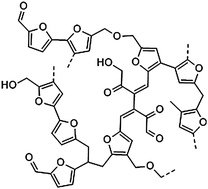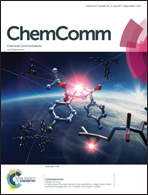Towards the photophysical studies of humin by-products†
Abstract
Biomass conversion into chemicals, materials and fuels emerged in the past decade as the most promising alternative to the current petroleum-based industry. However, the chemocatalytic conversion of biomass and bio-derived sugars often leads to numerous side-products, such as humins. The limited characterization of humin materials restricts their study for possible future applications. Thus, herein photophysical studies on humins and separated humin fractions were carried out using steady-state and time-resolved fluorescence techniques. This paper aims to add to the literature important information for scientists involved in the photophysical studies.



 Please wait while we load your content...
Please wait while we load your content...